eISSN: 2469-2794


Review Article Volume 2 Issue 2
Department of Science and Technology, Nottingham Trent University, UK
Correspondence: Andrew OHagan, Department of Science and Technology, Nottingham Trent University, Clifton Lane Nottingham NG11 8NS, United Kingdom, Tel 44115-8483153
Received: December 24, 2015 | Published: February 16, 2016
Citation: Hagan AO, Poxon AJ. Cocaine trafficking and the social impact of cocaine on UK society. Forensic Res Criminol Int J. 2016;2(2):63-70. DOI: 10.15406/frcij.2016.02.00048
Cocaine trafficking is a significant problem that affects countries all over the world and this needs to be researched in order to understand the huge impact that it has. The cocaine trade is a multi-billion pound industry that is governed by gangs organising the crime on an international scale and all efforts to eliminate the business have been unsuccessful up to the present time. The production of coca is based in South America; the majority coming from Colombia, Bolivia and Peru. These countries are the main cocaine producers where it is manufactured on a large scale and then distributed across the borders to the Caribbean, Australia and Europe. The methods of trafficking are varied and the cocaine is shipped, transferred by aircraft, transported by land routes and smuggled by drug mules. The controls in place are discussed and it becomes clear that they are often corrupt and the laws and efforts of prevention have not decreased the power of the cocaine trade. This sparked the question of whether it was worth spending millions of pounds to eliminate coca production and reduce trafficking and the explanations in this research conclude that there still has to be efforts in order to control the trade otherwise it would be even worse without the risk of any punishments and consequences.
This study uses limited qualitative interviews with three drug users who described their experiences of using cocaine. This research was to help understand the social impact of cocaine on UK society. For all three interviewees, their lives have been changed by the drug abuse and they had taken both powder cocaine and crack cocaine. They described how they had committed crimes in order to fund their drug habit and showed emotion when talking about how their family relationships had been affected. It is concluded that the cocaine trade is proving extremely difficult to eradicate because the supply and demand are so great, the network of the business is strong and it is on such a large scale where people are risking their lives because the income is worth it to them. It is also concluded that there is not enough research to draw conclusions about the effect of cocaine trafficking on the United Kingdom and therefore a UK wide study would be exceptionally valuable.
Keywords: cocaine, cocaine trade, trafficking, society, drug abuse, crime, international
The cocaine trade is a multi-billion pound industry1 and the trafficking of the drug which is an international organised crime is a huge part of it. There is a well-developed structure and network of individuals that allows this drug trade to work on an international scale contributing to many of the world’s economies.2 Over the years the demand for cocaine in the United Kingdom has increased and the trafficking of the drug into the UK has become an increasing problem.3,4 The phrase ‘drug trafficking’ involves producing or supplying a controlled drug, transporting or storing a controlled drug and importing or exporting a controlled drug under the Drug Trafficking Act5 where this contravenes the Misuse of Drugs Act 1971. It is important to research why cocaine is so popular in the UK and the impact it is having on people’s lives. Cocaine is a well-known drug of abuse and the effects that were discovered by South American Indians chewing coca leaves were the starting point to the substance becoming this much wanted stimulant drug.6 The history and production of cocaine is important to be researched because it gives an insight into the lives of those who are involved in the cocaine trade and shows that some people make an extremely good living out of it whilst others rely on it as a way of living.7
If the cocaine trade was limited to only the producing countries then the industry would not be anywhere near as successful and powerful as it is. This is because the trafficking of the drug out of South America that leads to countries all over the world being involved in the trade makes it worth the billions of pounds8 and is the main reason for it being so difficult to put a stop to. The trade routes and methods used to traffic the drug need to be discussed because it shows the great extent that traffickers go to so that the cocaine is distributed through the world and if they are known then it helps the controls to catch offenders. The trade chain involves people that smuggle drugs through borders and there are many different ways in which this happens9 which need to be included in this research because it shows how people risk their lives with their involvement in the cocaine trade. The drug dealers and traffickers are constantly coming up with new and innovative ways to traffic the cocaine and so for periods of time there are gaps in the knowledge of their new methods but these are soon discovered by customs and controls. There are projects in place as well as law enforcement to try and overcome the increasing problem that is the cocaine trade.10 This shows that there are things being done in order to combat the ever-growing industry at the starting point of the production of cocaine and when it is being trafficked into other countries.
The exact control measurements carried out will be discussed in order to better understand what is being done as well as the problems with many security and police forces being corrupt. This is an important part of the research because it shows how much being involved in the cocaine trade is worth that even individuals with jobs are turning to it as it provides a better income. It also shows how the prevention of the cocaine trade is just going around in circles because the solutions that are suggested are already hindered by corruption of control. The history and production of cocaine, the trade routes and methods of trafficking, including the income from the trade, will be explored with recommendations of what future action may be required. It is acknowledged that a more in depth research programme is required incorporating a larger cross section of the drug using community, but it is also believed that the subjects interviewed during the course of the study were truthful in their responses. The in-depth interviews, however, serve to obtain first-hand accounts in relation to the impact of cocaine on the lives of those who have been involved in the use for a number of years; exploring the content of these experiences and the meaning they have for the drug users.
Cocaine is a Class A controlled drug under the Misuse of Drugs Act 1971 and is under Schedule 2 of the Misuse of Drugs Regulations 2001. It has been known for its stimulant properties for years6 as the coca leaves from which cocaine is derived were chewed by working South American Indians who claimed it prevented them from becoming tired and hungry.10 The stimulant has since been found to have many different effects and long term health risks which is why it is illegal. The main effects are that it gives you a feeling of euphoria, you have an increased amount of energy, an increased alertness and increased sociability which is why people take the drug.11 However the health risks and mental effects that include paranoia, insomnia, anxiety, depression, heart attacks, seizures and blackouts12 are serious and essential reasons to not use cocaine as well as the bad physical features that are connected to cocaine abuse including rotten teeth, sunken eyes, yellow skin and well-known loss of the nasal septum. Cocaine is not only used by those who are unemployed or considered as ‘junkie scumbags’ either, there are many celebrities who have abused cocaine with one being Whitney Houston who fairly recently died because of cocaine abuse amongst other reasons.13
A popular concoction is to mix cocaine with heroin to get what is known as a ‘speedball’ and this is deadly dangerous as the cocaine speeds the heart up whilst the heroin is slowing it down and it puts a huge strain on the heart.11 Although this is a great risk, drug addicts crave the feeling that it gives them as they say it’s a huge rush14 and this feeling is first priority. Withdrawal is another dangerous part of drug taking as addicts think they can’t live without the drug 10 and this leads them to never breaking the vicious circle. There are two forms of cocaine as seen in (Figures 1 & 2);15 the powder form which is a fine white crystalline powder and the crack cocaine which is solid rocks usually of off-white colour.16

Figure 1 Image to show the appearance of powder cocaine.15
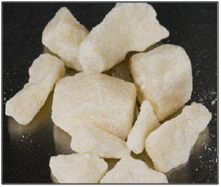
Figure 2 Image to show the appearance of crack cocaine.15
The powder form is cocaine hydrochloride, the salt form, and it is made from the coca paste derived from the coca leaves whereas crack is the freebase form as the salt is removed.6 Powder cocaine is abused by snorting whereas crack can be smoked as it vaporises at lower temperatures than powder cocaine. Cocaine can also be injected and is more often taken this way when mixed with heroin but this method of use is the least common.6 Smoking crack is often preferred to snorting cocaine because the effects are more rapid as the freebase crack melts and vaporises under flame14 and the vapour is inhaled causing immediate effect on the brain. For cocaine addicts, one of the most important things is the sudden rush and speed of onset so as smoking crack is the fastest method to feel the effects, this is considered the best choice to drug abusers.6
The street slang is a part of the dealing process for gangs because they use it as code for what they are really selling. Cocaine has names such as ‘snow’ and ‘dust’ because of its powder form and crack is often called ‘rocks’ and ‘teeth’ because of its appearance. Other names that are also well-known are ‘Charlie’, ‘white lady’ and ‘coke’10,17 (Figure 3).

Figure 3 Image of a coca plant.17
Although cocaine is now a controlled substance and seen as a highly dangerous drug, this is the opposite of how it was seen in the past and the history shows a different side to how it is now perceived. In the 1860’s, a man named Angelo Mariani produced a wine containing coca and by 1870 it was being sold all over France.12 Cocaine was also seen as a treatment for morphine addiction by Sigmund Freud in 1884 and this same year Karl Koller discovered it as being good for local anaesthetic. At these times the ideas didn’t sound absurd as the effects that cocaine has seemed appropriate for those uses12 however now that the knowledge of the drug has developed and studies have taken place to see the long term effects of cocaine, the medicinal uses don’t exist. Another part of history of cocaine that many people do not know is that Coca-Cola used to contain cocaine.18 In 1911 the Coca-Cola company owners were in federal court charged with not putting cocaine in the product.12 It is now illegal for any product to contain cocaine and so this shows how far the legislation has changed over the years. The Table 1 shows the journey as so to speak of the laws that have controlled cocaine and other substances such as heroin. It names the piece of legislation and explains what this law involved.6,14,19
Legislation |
Explanation |
Pharmacy Act 1868 |
Poisons and dangerous substances regulated for the first time. Cocaine was covered by Part 1, Schedule A for ‘all poisonous vegetable alkaloids and their salts’ but cocaine was not yet separated as a drug under this Act. |
Pharmacy and Poisons Act 1908 |
Cocaine was specifically named in the amended schedule. |
Defence of the Realm Act 1914 Regulation 40B |
Made the sale of ‘any sedative, narcotic or stimulant’ to a member of His Majesty’s Forces, with intent to make him drunk or incapable, punishable by imprisonment up to six months. The regulation arose from soldiers using cocaine. |
The Dangerous Drugs Act 1920 |
Prohibited the production, import or export, possession, sale, and distribution of cocaine and other drugs, opium, morphine and heroin, except by persons licensed by the Home Secretary |
The Dangerous Drug Act 1967 |
Restricted the prescribing of cocaine to addicts only to specially licensed doctors. |
The Misuse of Drugs Act 1971 |
Resolved the matter of possession of personal use being a different sentence for possession with intent to supply. |
The Controlled Drugs (Penalties) Act 1985 |
Increased the maximum penalty for drug trafficking offences, including cocaine, from fourteen years to life imprisonment. |
The Drug Trafficking Offences Act 1986 |
Made it an offence to sell or supply any article, except hypodermic syringes, which could be used or adapted for use in the administration of a controlled drug. This offence was mainly aimed at cocaine as kits for smoking cocaine were on sale in London. |
The production of cocaine
The manufacturing process of cocaine is a long-winded and complicated process10 as the coca leaves only contain estimated 1% cocaine and there are many different steps that have to be carried out until the production is complete. The main producing countries are Colombia, Bolivia and Peru where the jungles and mountains are covered in coca plants.20 Rincón-Ruiz et al.,21 study how the war on drugs in Colombia affects the rainforest. The following figures although a little dated are a good illustration of the cocaine problem showing that between the years 2003-2008 over 250,000 hectares of rainforest was destroyed in Colombia in order to plant coca. Also in 2006, 128 hectares of land could produce one metric ton of cocaine giving an estimate that the 250,000ha of land could produce 1,953 metric tons of cocaine which to show the enormous amount that is, it equals to 1,953,000kg cocaine. The deforestation is a huge problem in South America as this study shows so it is valuable research with significant results, and this deforestation causes a bad effect on wildlife and the environment.21 Endangered species such as the jaguars that live in the Amazon are becoming extinct as their habitat is being destroyed (Figures 4 & 5).22,23
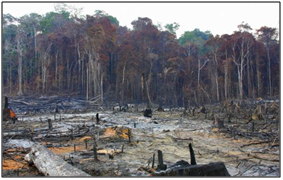
Figure 4 Image showing the deforestation occurring due to coca plantations.23
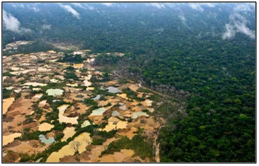
Figure 5 Image showing the deforestation of the Amazon Rainforest for coca plantations.23
The production of cocaine can differ greatly from large scale productions in clandestine laboratories to small scale productions in jungle huts.8 However, the method of production remains the same and always takes place in hidden secretive areas covered by trees to prevent being caught as seen in Figure 6.
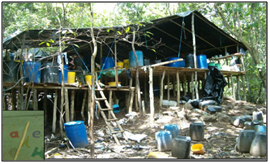
Figure 6 Image showing a typical coca leaf processing plant in the middle of the Colombian jungle.17
This image shows the conditions of the jungle laboratories; they are dirty, unstable with a shanty structure and the equipment used in not sterile. The process begins with extracting the cocaine from the coca leaves by making coca paste.10 This is done by using bleach, kerosene and sulphuric acid so that the leaves soften and are made into paste. In the jungles where it all takes place, the people use their feet to crush the leaves and this is dangerous because the chemicals used are strong and acids burn. The next step is to filter the solution and skim the kerosene containing the coca alkaloid off, and all the rest is waste. This waste is poured into the rivers, as seen in (Figure 7), which causes water pollution which is bad for the environment and the animals of the ocean.21 The remaining toxic solution is strained and the residue goes to a laboratory where hydrochloride salt is added (use hydrochloric acid) which makes powder cocaine.6 To make crack cocaine which is the freebase form, powder cocaine is heated with baking powder.16 The refinery of cocaine often takes place at the home of a cartel (boss in the drug business) and logos are imprinted on the blocks of cocaine as shown in Figure 8.

Figure 7 Image showing the waste being poured into the rivers.17

Figure 8 Image showing the logos imprinted on cocaine blocks.17
Although those that are involved in the production of cocaine in the jungles of Colombia, Bolivia and Peru do not earn good money, it is the best option and income that they will ever be offered in their lifetime 8 and this means that they would rather be in the trade even with the health risks, risk of being killed by others higher up in the chain and the risk of imprisonment.7 Having studied the production of cocaine it is clear that the main producers are Colombia, Bolivia and Peru and then the cocaine is trafficked and distributed around the world. The method is not simple or fast but the income makes it worthwhile to everyone involved whether in the jungle treading on the leaves to the person living in the mansion just collecting the money at the end. Cocaine production is on a massive scale with hundreds of thousands of hectares of land being used for coca plantation and this is just the beginning of an international drug trade.
The trade routes, methods of trafficking and job roles involved
After cocaine has been produced in Colombia, Bolivia and Peru there are many different routes that are used to distribute the drug not only to the United States but to the rest of the world. It is estimated that about 75% of all cocaine produced is destined for the United States12 and this arrives by using the Caribbean corridor by ships and aircraft and by using the land routes across Mexico. The waterways in South America are used for shipping cocaine to the United States and for shipping the precursor chemicals needed back to South America for production.12 Cocaine arrives in Europe by trafficking through Africa and there are routes through Spain and Portugal6 these routes still exist today, the Netherlands are the main hub in Europe and from here cocaine is transported to the United Kingdom by a variety of means. There are many different methods of trafficking including by sea either on fast boats or bigger ships, by air on small aircrafts and by land crossing borders. No matter which method is chosen, the aim remains the same that the drug barons are trying to beat the customs10 and maximise the amount of cocaine that reaches the destination. Figure 9 shows a small boat that is used for shipping cocaine.
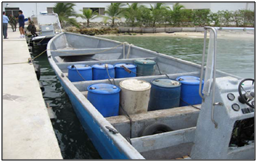
Figure 9 Image of a small boat used for shipping cocaine out of South America.17
There are so many of these sent out that if a few don’t make it, there is no consequence to the drug barons because they make such a vast profit that such a loss is worthless. The methods above are for cargos of larger amounts of cocaine but there are other methods where the cocaine is concealed and trafficked in smaller amounts. Common methods are body stuffing and packing24 where drug mules are used to traffic cocaine through customs. Cocaine is the most common drug involved in body stuffing25 and it poses serious risk to the drug mules.26 Figure 10 shows the cocaine pellets that have been swallowed by a body packer.
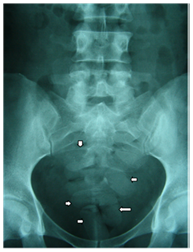
Figure 10 Image showing the pellets of cocaine inside a body packer.26
There can be up to two kilograms of cocaine swallowed in pellets at one time and lubricant jelly and tubes down the throat are used to aid the process. Although the medical risks are serious there is also the risk of imprisonment but this is not enough to stop the drug traffickers because their income takes priority over the extreme risks and they have to do this in order to make a living. Other methods of trafficking drugs are by using animals where pellets are forced into them, specially made suits that have compartments to contain cocaine, putting it in luggage, and then some of the methods are so organised that the cocaine is actually concealed in the items at the point of manufacture such as paint, buttons of clothing, coal and compost.14 After researching the trade routes and trafficking methods it is clear that there is an established network in order to transport cocaine from South America to the rest of the world.
The drug mules risk their lives and these are possibly the worst off in the cocaine trade because if caught they are the ones who are punished and the drug barons make sure that they cannot be traced back to. This is part of the organised international crime where the drug cartels operate as governments and have control.12 The trafficking of cocaine has proved to be dangerous with swallowing amounts that would be more than an overdose if the wrappings split. This research has also shown that for some, the cocaine trade has made them very wealthy people and funds a lifestyle that the majority of the population could only dream of.
The income from the cocaine trade
Cocaine is one of the biggest contributors to many of the world’s economies and drug money in the hands of gangs involved in the organised crime gives them enormous power.2 The income provided by the cocaine trade is on such a large scale and most involved come from economically disadvantaged areas where drug-related crime is around every corner27 so it seems an attractive option because it will earn them the best money with the poor education that they have. From the price at production of cocaine to the price it is sold at street level in the United Kingdom, it is increased by more than 150 times the original price. This is a huge profit made and shows that the cocaine trade produces an enormous income for those that are controlling the business. One of the biggest factors that contribute to the increased profits for the drug dealers is the cutting and bulking of the cocaine28 with other substances such as caffeine. This is a popular cutting agent because it is a stimulant like cocaine.
The cutting of cocaine increases profit because it allows more doses to be made28 by using less of the illicit drug. Each time the cocaine comes into contact with a new dealer it is re-bulked and so the end purity has decreased from about 80-90% pure at production to between 10-20% pure at street level sale but the price has increased massively as is shown in Table 2 (Appendix I). Figure 11 shows furniture that was found at a cartel’s home and part of the stools are gold plated.
Region/Country |
Number of Laboratories Seized for Crack/Cocaine/Paste Production in 2009-2010 |
Africa |
1 |
North America |
23 |
South America |
13,072 |
Europe |
17 |
Table 2 Shows the amount of laboratories that were seized in 2009-2010 across the world from using the ‘Manufacture seizures of illicit laboratories reported for 2009-2010’ report found in Appendix I.
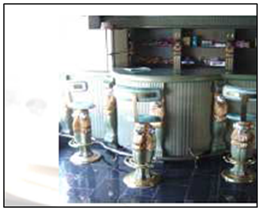
Figure 11 Gold plated stools at a cartel’s home.17
This shows the kind of lifestyle that the drug dealers at the top of the business have and gives an insight into reasons for why they would continue being in the trade. There are various different cartels across South America and the drug-related crimes between gangs cause many homicides from shootings.27 It is estimated that in 1993, the Cali cartel in Colombia, which had the majority of control over the cocaine trade at the time, was earning an estimated £16 billion each year.29 From looking at that statistic it is no wonder that the cartels are at war with each other to get control over this trade as the income is extortionate. Although the workers in Colombia, Bolivia and Peru don’t earn great money for manufacturing the cocaine, it is the best income that they would ever get and so the cocaine trade is essential for their living.8 The people of the jungles where the cocaine is produced say that the money of the jungle is addictive just like the drug8 and this is the main reason for involvement in the cocaine trade. If they were to give it up and quit, they would not know what to do because to them it is a normal way of living7 and a way to support their families as well as themselves.
It is a huge problem that people are involved in the cocaine trade in these countries as it is the best source of income and it shows how bad of a state the countries are in. Even though there are medical risks and the consequence of imprisonment if caught, this has not stopped people working in the cocaine trade whether it is in the production of the drug, the trafficking of the drug across the world or the dealing of the drugs within countries. After researching the income that the cocaine trade provides, it is clear that it supports many economies in the world and it provides drug cartels and the people at the top of the business with wealth that is more than what most people can imagine.
The control of cocaine trafficking and possible solutions to eliminate the problem
The cocaine trade is on such a large scale that it has proven to be extremely difficult to try and combat. There have been various different efforts, projects, laws and schemes put in place to try and eradicate the ever-increasing problem but nothing has yet caused a significant impact on putting a stop to this illegal internationally organised crime. The countries involved in cocaine production and trafficking have used different methods in order to try and prevent the illegal activity. In Colombia, Bolivia and Peru there are forces that monitor the trafficking routes but many are corrupt and make deals with the drug carriers in order to earn money.8 The police in these countries check the ‘colectivos’ which are the minibuses that enter the jungles and are the only mode of public transport. All passengers’ bags are checked and hands are checked for any sulphuric acid burns as this indicates working in coca pits8 and if burns are found the police take any money from them. The eradication efforts in Colombia, Bolivia and Peru have only caused the workers to move to different areas to grow coca and produce cocaine.12
The discovery of secret jungle laboratories has not decreased the production of cocaine in any way because there are always new locations to move to. In 2000 Plan Colombia, financial help to combat the war on drugs, was put in place and the United States sent more than $2.4 billion to Colombia.12 This was decided because the problem in Colombia was becoming worse and there were fears that the gangs operating the crime were growing in strength 30. Two other programs have been sponsored by the United States where the aim is to stop coca production in order to eliminate the manufacture of cocaine.8 One program was set up in 1981 where the US Agency for International Development and the Peruvian Government encouraged farmers to replace their coca crops with rice and corn. The other was financed by the US State Department’s Bureau of International Narcotics Matters and the aim was to destroy the coca plantations.8 I think the idea of tackling the problem at the core; production of cocaine by growing coca, is a good way to try and eliminate the cocaine problem because if it wasn’t produced in order to supply then there wouldn’t be a trade.
However these programs weren’t successful and one of the main problems is because the controls that are in place are corrupt therefore the programs aren’t effective as those involved in running them are breaking the rules. Even presidents of countries including General Meza of Bolivia have been linked with drugs and so the corruption isn’t just on a low level.10 If the cultivation of coca and the production of cocaine are too difficult to eliminate then other methods must be considered and important ones are ensuring punishments are harsh if caught offending and providing other opportunities for people in the countries suffering from poverty and poor education rather than them joining the trade in order to make a living as most workers are doing it for economic survival.31 A study on why drug traffickers have not quit the ‘game’ as it is called has been carried out and the majority of responses from the interviews were because of the income and they would not know what else to do.7
The study suggests that there should be support groups, educational classes and counselling meetings along the lines of Narcotics Anonymous. I think this would help improve the understanding of people that there are other ways to earn money and it would support them to do that which in effect helps reduce the cocaine trade as less people will be involved in the trafficking. However, I still do not feel like this would make the huge impact needed in order to eliminate the crime. Although there are laws in place; the main one covering cocaine is the Misuse of Drugs Act 1971 and the Controlled Drugs (Penalties) Act 1985 increased the sentencing for drug trafficking, this is still not enough to deter people from being involved in the trade because the income they receive is worth the risk. A study in Nigeria32 concluded that the punishment was not sufficient to stop traffickers and considered the war on drugs as being serious. The death penalty once existed in the country and it had been rumoured as an option to return for drug trafficking offences but this did not happen.
The social impact of cocaine on UK society
There has been extensive research into the social impact on society amongst African-American adolescents involved in drug trafficking33 and there has been some research, although more limited, into the trend of adolescent drug trafficking in the United Kingdom.34 What the studies are missing is interviews with those who have gone through most of their life taking cocaine, talking about how it has impacted them and the people around them. This method of research is lacking in the United Kingdom, so a limited in-depth set of interviews with people who have abused cocaine to see the social impact it has had on themselves and society. The description of the study for the interviewees to read is given in (Appendix II) and the consent form that each signed, to cover ethical issues, is given in (Appendix III). Before the interviews questions were prepared which are given in (Appendix IV) but because the questions are open, the actual question asked depended on the responses given by the interviewee.
For the purpose of this study open questions are better than closed questions because the answers are unlimited35 and so there is room to develop the responses. The three interviews carried out are sufficient to gain information, because they are in-depth and provide an insight into the social impact on society. The in-depth, unstructured approach appears to be the best method for interviews of this type as illustrated in.14 All studies have limitations and the main ones for this, are that the geographical location is limited to Nottingham, the sample size is small and the age range is not greatly varied. For future studies it would be advantageous to have more interviews from cocaine users spread across the United Kingdom but within this research it was difficult to get in contact with cocaine users and so the analysis in this chapter is based on the primary research undertaken with three interviewees as well as secondary research where interviews have previously been carried out. There are a few main points that have arisen from the three interviews carried out. From looking at (Appendices V-VII) it can be seen that all three users have taken cocaine in the powder form as well as crack.
Another similarity is that cocaine was not the first drug experience in any of the three cases and all three individuals had mixed crack with heroin to produce snowballs. The main differences are the age that cocaine was first taken as it differs from 16 and 18 to 33 years old. The reasons for first taking cocaine also differ because two of the drug abusers tried it out of curiosity whereas one abuser took it for the purpose of staying awake at the clubbing scene. All three admitted that it had affected not only themselves but their friends, family and society. One abuser talked about how he treated his wife badly and stole from his family and said ‘I would walk over anybody to get my fix’. Another abuser said how he has been in prison many times after committing crimes and said ‘the majority’ of addicts commit crimes in order to afford their drug habit. The other drug abuser didn’t use cocaine often but has witnessed the drug affecting her friends and family as her daughter takes cocaine and her friend lost her boyfriend due to a cocaine dealing incident which left him stabbed to death. This user described cocaine and said it ‘makes people more violent and unpredictable’. From these interviews it is clear that drug abuse including cocaine has affected these peoples’ lives in the long term and has also affected those around them.
They have committed crimes in order to fund their drug habit and this research supports previous research that addicts turn to crime for drug money (Twist, 1989). Previous interviews have been carried out where cocaine users had said that they had ‘sold drugs’ and ‘stolen goods’ in order to get money for their drug habit.14 From the interviews carried out and the research into previous studies, it is clear that cocaine abuse amongst other drugs has a huge impact on society. The drug users commit crimes and have a negative effect on their friends and family. Drug-related crime is increasing28 and in the United Kingdom there is becoming an increasing amount of violence associated with gangs and dealing of the drugs. A poem written by Danny J Aperture appears to sum up the impact of cocaine on every society including the United Kingdom:
‘Cocaine true, cocaine blue, cocaine have been lying to you It makes you happy when you are sad, it make you steal from your mom or dad. Make you smile for a while send you on the floor like a child. White specks here, white specks there, you even look in your sister hair. You see the time, you look at the clock, tell you it’s time for another rock. Cocaine true, cocaine blue, cocaine get the best o’ you. I sold my stereo and TV, now I have nothing left for me. I lost my children and my wife now I don’t care what happen to my life. Chasing the dragon on a cloud, people talk about you out real loud. What can you do, what can you say because it won’t chase your cocaine blues away’.27
One of the drug abusers that was interviewed agrees with the above poem in his responses; that he has hardly any contact with his children anymore, has stolen from his family and talked about chasing the dragon because you are chasing the rush that you will never get at the same level again (Appendix V). I think within different societies across the world there are differences in why people abuse cocaine but the impact generally stays the same that it affects not only the drug abusers but also those around them and crime is linked to the drug abuse. Cocaine is a Class A drug for a reason; it is ferociously addictive and changes people’s personality and behaviour and this has been shown through the research carried out.
The background information of cocaine has been provided including where the coca originates from, what the different forms of cocaine are, the mental and physical effects and the laws that cover cocaine and trafficking. The research, though limited, has shown how cocaine is manufactured and the problems it causes; deforestation to the jungles and rainforests and health risks to those involved in making cocaine. The trade routes show how the cocaine trade is on an international scale and this section shows the extent the drug traffickers go to in order to smuggle the cocaine across the borders. The results from the income of the trade show that this business is a multi-billion pound industry making those at the top very wealthy people. In the producing countries, being involved in the cocaine trade is the best option for the people as it gives them more than what they could earn doing other jobs. They see it as worth taking the risks because if they don’t then they won’t be able to maintain a living. The control of trafficking has proven to be unsuccessful up to the present time and this is mainly because it is difficult to eliminate the production of cocaine and so many shipments of large hauls of cocaine and drug mules are trafficking the drugs across, it is difficult to catch enough of them in order to make a difference. The impact of cocaine on UK society is huge as it affects the crime rate, welcomes more gang related violence and affects people’s family lives. As well as the social impact being important, it was also found that it does cause great harm to the body and is seriously addictive which means people keep spiralling further into the drug abuse rather than getting out of it. The three interviews would tend to support this view.
The way forward
For the future, it is important to look at the control of trafficking, far more research is needed in relation to this aspect. The areas of cocaine production, the trade routes and the methods of trafficking have already been established so now it is would be desirable to focus on control because this will improve law enforcement and the number offenders apprehended. In reality it is much more difficult than this because the gangs that are operating this trade always seem to be one step ahead and it is extremely difficult to break through the circle enough to make a difference. Although it is not easy, all the controls and programs put in place are worthwhile because without these measures, the problem could be a lot worse still. Another view is that the demand is not decreasing and there is no way of putting a complete stop to the cocaine trade so the best option is to think about harm reduction, rehabilitation and support for cocaine users. This is an area that could be researched more for the future because it could reduce the amount of cocaine abuse and related crime by educating people about cocaine and the harm that it causes, even if the trafficking cannot be stopped. The impact on the UK has not been fully researched or explored and there is insufficient data to support any analysis of cocaine trafficking in the United Kingdom. A United Kingdom wide study is needed in order to understand the effect of cocaine trafficking here, this should involve a large sample population covering all geographical areas.
None.
The author declares that there are no conflicts of interest.

©2016 Hagan, et al. This is an open access article distributed under the terms of the, which permits unrestricted use, distribution, and build upon your work non-commercially.